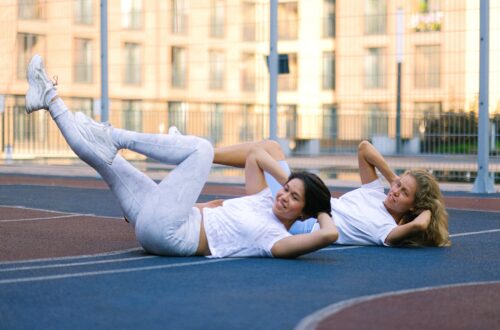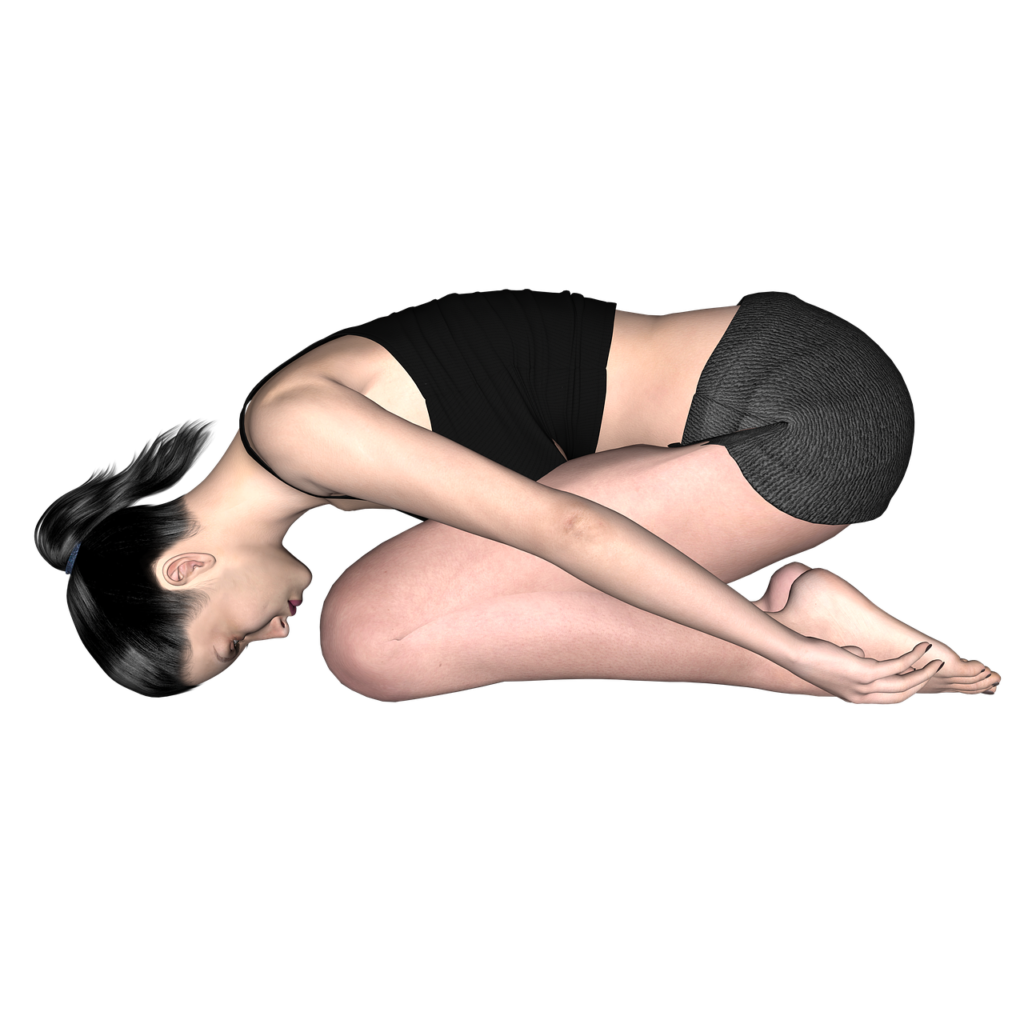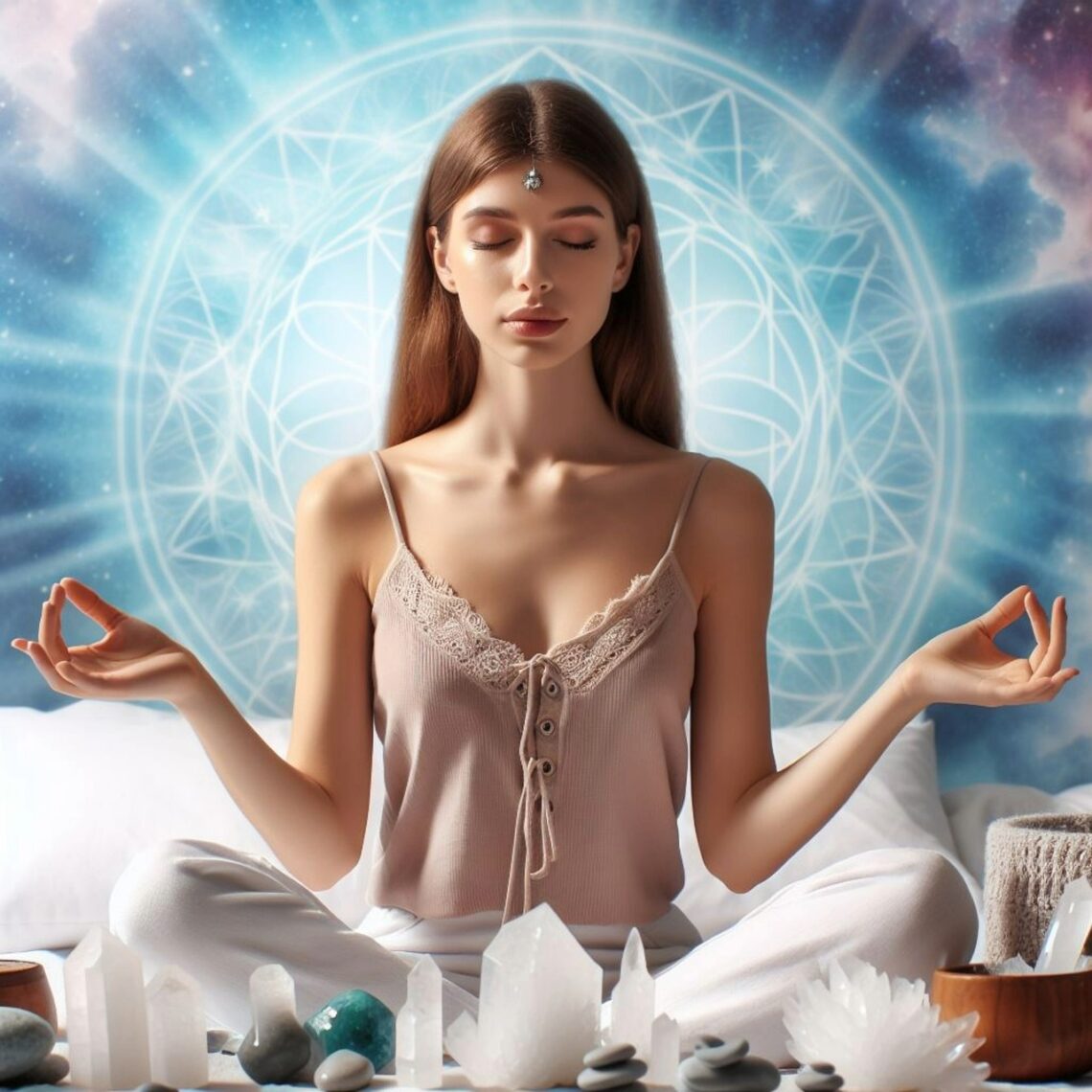
De-Stress with Yoga: 5 Moves to Calm Your Mind
We live in a fast-paced world where stress seems to follow us everywhere. It’s easy to feel overwhelmed when you’re dealing with work deadlines, family commitments, or just the hustle and bustle of everyday life. But amidst all this chaos, there’s a time-tested solution that offers relief for both body and mind: yoga.
Yoga isn’t just about stretching and posing – it’s a whole lifestyle. It combines physical movements, breathing exercises, meditation, and mindfulness to help us find balance and peace. In this blog, we are going to explore five simple yoga poses that can help you de-stress and find some peace in your busy life.
So, if you’re feeling stressed out and looking for a way to unwind, keep reading to discover how these yoga poses can bring some calm and tranquility into your day. So, grab your yoga mat, and let’s dive in!
Understanding Stress and Its Effects
Before we explore the therapeutic benefits of yoga, it’s essential to understand the nature of stress and its impact on our well-being. Stress is the body’s natural response to external pressures or demands, triggering a cascade of physiological and psychological reactions. While acute stress can sometimes be beneficial, chronic stress, characterized by prolonged exposure to stressors, can have detrimental effects on both physical and mental health.
Chronic stress has been linked to a myriad of health problems, including hypertension, cardiovascular disease, weakened immune function, anxiety, and depression. Moreover, it can impair cognitive function, disrupt sleep patterns, and contribute to unhealthy coping behaviors such as overeating or substance abuse. Given the pervasive nature of stress in modern society, finding effective strategies to manage and mitigate its impact is paramount.
Yoga as a Stress Management Tool
Yoga offers a multifaceted approach to stress management, addressing both the physiological and psychological components of stress. Through a combination of mindful movement, conscious breathing, and relaxation techniques, yoga can help activate the body’s relaxation response, counteracting the effects of stress on the nervous system.
Numerous scientific studies have demonstrated the efficacy of yoga in reducing stress levels and improving overall well-being. Research indicates that regular practice of yoga can decrease levels of cortisol, the primary stress hormone, while also enhancing parasympathetic nervous system activity, which promotes relaxation and restorative processes in the body.
Furthermore, yoga encourages present-moment awareness and mindfulness, fostering a deeper connection between mind and body. By cultivating mindfulness, individuals can develop greater resilience to stress, learning to observe their thoughts and emotions without judgment and respond to stressors with equanimity.
The following section will explore five yoga poses specifically selected for their ability to induce a state of calm and relaxation, making them ideal tools for stress relief.
1. Child’s Pose (Balasana)
Child’s Pose, also known as Balasana, is a gentle resting posture that provides a sense of surrender and comfort. This pose helps release tension in the back, shoulders, and hips while promoting deep relaxation.
Here’s a step-by-step guide on how to practice Child’s Pose effectively:
Starting Position:
- Begin by kneeling on your yoga mat. Your knees should be hip-width apart, and your big toes should touch behind you.
- Sit back on your heels, ensuring that your buttocks are resting on your heels.
Forward Fold:
- As you exhale, lower your torso forward and down between your thighs.
- Let your forehead rest gently on the mat. If your forehead doesn’t reach the floor, you can place a yoga block, cushion, or folded towel under your forehead for support.
Arm Placement:
- Extend your arms forward, placing your palms on the mat. Your arms should be straight, with your fingertips reaching forward.
- Alternatively, you can relax your arms alongside your body, with your palms facing up.
Breathing and Relaxation:
- Close your eyes softly and focus on your breath. Allow your breath to become deep and steady.
- With each inhalation, feel your back expanding and stretching. With each exhalation, let go of any tension or tightness in your body.
- Stay present in the pose, feeling the gentle stretch through your spine, hips, and thighs.
Duration:
- Hold the pose for 1 to 3 minutes, or longer if desired. The length of time you hold the pose can vary depending on your comfort level and experience.
- Use this time to surrender to the posture, allowing yourself to relax and unwind.
Release:
Child’s Pose provides a nurturing space for introspection and relaxation, inviting practitioners to let go of tension and embrace a sense of inner peace.
2. Cat-Cow Pose (Marjaryasana-Bitilasana)
Cat-Cow Pose is a dynamic yoga sequence that helps mobilize the spine and promote spinal flexibility. This gentle flow between two poses, Cat Pose and Cow Pose, encourages synchronizing movement with breath, fostering a sense of mindfulness and presence.
Here’s a detailed guide on how to practice Cat-Cow Pose:
Starting Position:
- Begin on your hands and knees in a tabletop position, with your wrists directly under your shoulders and your knees under your hips.
- Ensure that your spine is in a neutral position, with your head aligned with your spine and your gaze directed towards the floor.
Breath Synchronization:
- As you inhale, initiate the movement by arching your back and lifting your tailbone and chest towards the ceiling. This is known as Cow Pose.
- Allow your abdomen to sink towards the floor as you broaden across your collarbones and open your chest.
- Lift your gaze towards the ceiling without straining your neck.
Transition:
- As you exhale, initiate the movement by rounding your spine towards the ceiling, like a cat stretching its back. This is Cat Pose.
- Tuck your chin towards your chest, draw your navel towards your spine, and press firmly into your palms to round your upper back.
- Feel the stretch along your entire spine as you gently release tension.
Flowing Movement:
- Flow smoothly between Cat and Cow Poses, syncing your movements with your breath.
- Inhale to transition into Cow Pose, arching your back and lifting your chest.
- Exhale to transition into Cat Pose, rounding your spine and drawing your belly button towards your spine.
- Move at your own pace, allowing each movement to be guided by your breath.
Repetition:
- Repeat the sequence for 5-10 rounds, or as many times as feels comfortable for you.
- Focus on the fluidity of movement and the connection between your breath and motion.
- With each repetition, explore the full range of motion in your spine, gradually loosening any tension or stiffness.
Awareness and Benefits:
- Throughout the practice, maintain awareness of how each movement feels in your body.
- Notice any areas of tightness or restriction, and allow the gentle movements of Cat-Cow Pose to release tension and promote flexibility.
- Cat-Cow Pose helps to improve spinal mobility, increase circulation to the spine, and create a sense of groundedness and presence in the body.
Cat-Cow Pose helps release tension in the spine, while also promoting a sense of groundedness and presence in the body.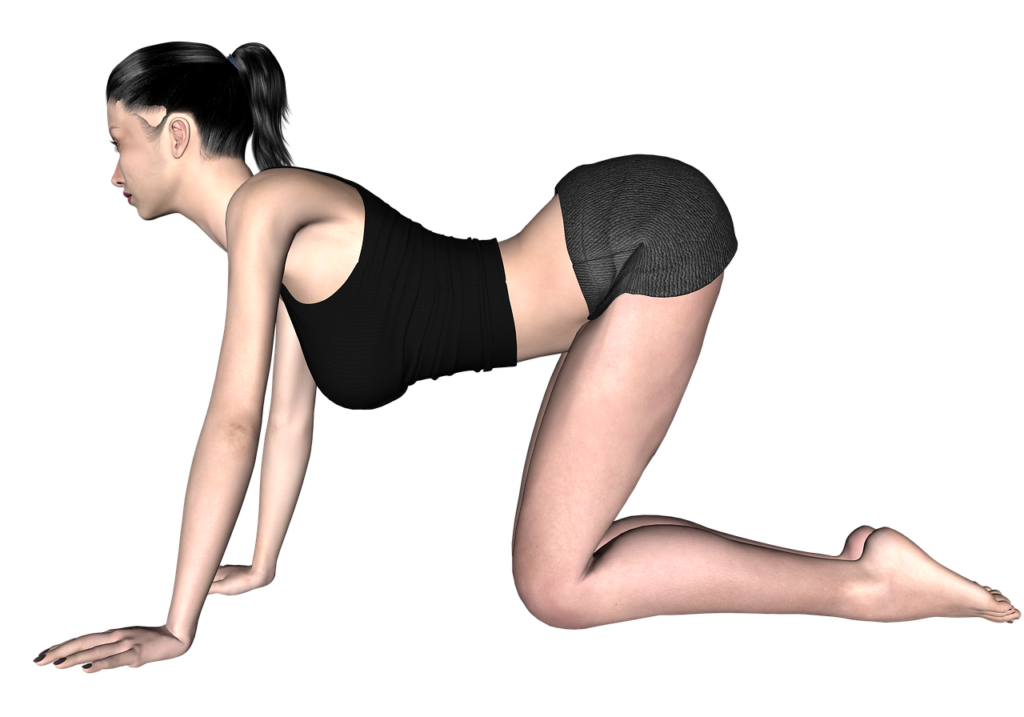
3. Downward-Facing Dog (Adho Mukha Svanasana)
Downward-Facing Dog is a quintessential yoga pose that stretches the entire body, while also calming the mind and relieving stress. This inverted posture helps lengthen the spine, release tension in the shoulders and hamstrings, and improve circulation.
Here’s a detailed guide on how to practice Downward-Facing Dog effectively:
Starting Position:
- Begin on your hands and knees in a tabletop position, with your wrists positioned slightly ahead of your shoulders and your knees directly below your hips.
- Spread your fingers wide apart and press firmly into the mat with your palms, creating a strong foundation for the pose.
Transition:
- On an exhale, lift your hips up and back towards the ceiling, straightening your arms and legs.
- Your body will resemble an inverted “V” shape, with your hips lifted towards the sky and your hands and feet pressing into the ground.
Alignment:
- Ensure that your arms are shoulder-width apart and your feet are hip-width apart.
- Press firmly into your palms and fingers, distributing the weight evenly across your hands.
- Engage your quadriceps (the muscles at the front of your thighs) to lift your thighs towards the ceiling.
- Press your heels towards the floor, but it’s okay if they don’t touch the ground.
Spinal Extension:
- Lengthen your spine by reaching your tailbone towards the ceiling and drawing your chest towards your thighs.
- Keep your neck relaxed and allow your head to hang freely between your arms, with your gaze directed towards your feet or knees.
Breathing and Relaxation:
- Take slow, deep breaths as you hold the pose, focusing on expanding your ribcage with each inhale and releasing any tension with each exhale.
- Stay in the pose for 1-3 minutes, or longer if comfortable, while maintaining a steady breath and relaxed mindset.
Release:
- To come out of the pose, bend your knees and lower them to the mat, returning to the tabletop position.
- You can rest in Child’s Pose or any other comfortable position to counterbalance the stretch.
Downward-Facing Dog offers a sense of rejuvenation and revitalization, making it an excellent antidote to stress and fatigue.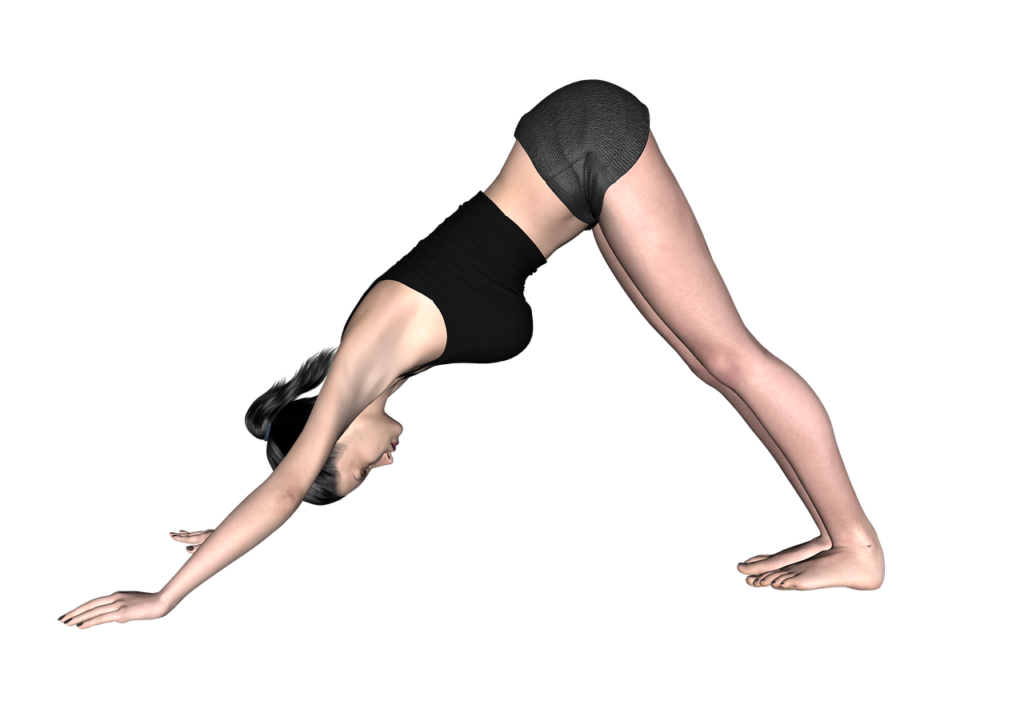
4. Seated Forward Bend (Paschimottanasana)
Seated Forward Bend is a calming yoga pose that gently stretches the spine, hamstrings, and lower back, while also promoting relaxation and introspection. This pose encourages surrender and letting go, allowing practitioners to release tension and quiet the mind.Here’s a step-by-step guide on how to practice Seated Forward Bend effectively:
Starting Position:
- Sit on the mat with your legs extended in front of you.
- Ensure that your spine is tall and your sit bones are grounded on the mat.
Leg Alignment:
- Keep your legs together and feet flexed towards you.
- Engage your quadriceps to activate the muscles in your thighs.
Inhale and Lengthen:
- Inhale deeply to lengthen your spine, lifting your arms overhead.
- Feel the elongation from your tailbone to the crown of your head.
Forward Fold:
- Exhale slowly as you hinge at your hips and fold forward from your pelvis.
- Maintain the length in your spine as you fold forward.
- Reach forward with your hands, aiming to hold onto your feet, shins, or ankles.
- If you cannot reach your feet, you can use a yoga strap wrapped around your feet for assistance.
Spinal Alignment:
- Keep your back as straight as possible during the forward fold.
- Avoid rounding your spine excessively, especially if it compromises the integrity of the stretch.
Relaxation and Breath:
- Relax your neck and shoulders completely, allowing your head to hang heavy.
- Soften your facial muscles and close your eyes to turn your focus inward.
- Breathe deeply and consciously, allowing each exhalation to deepen the stretch and release tension.
Hold the Pose:
- Hold the pose for 1-3 minutes, or longer if comfortable.
- Focus on surrendering to the sensation of the stretch, letting go of any resistance or tension in the body.
Release:
- To come out of the pose, inhale as you slowly lift your torso back up to a seated position.
- Extend your arms overhead once again, lengthening your spine.
- Exhale as you lower your arms down by your sides.
Seated Forward Bend offers a sense of release and surrender, inviting practitioners to let go of stress and tension stored in the body.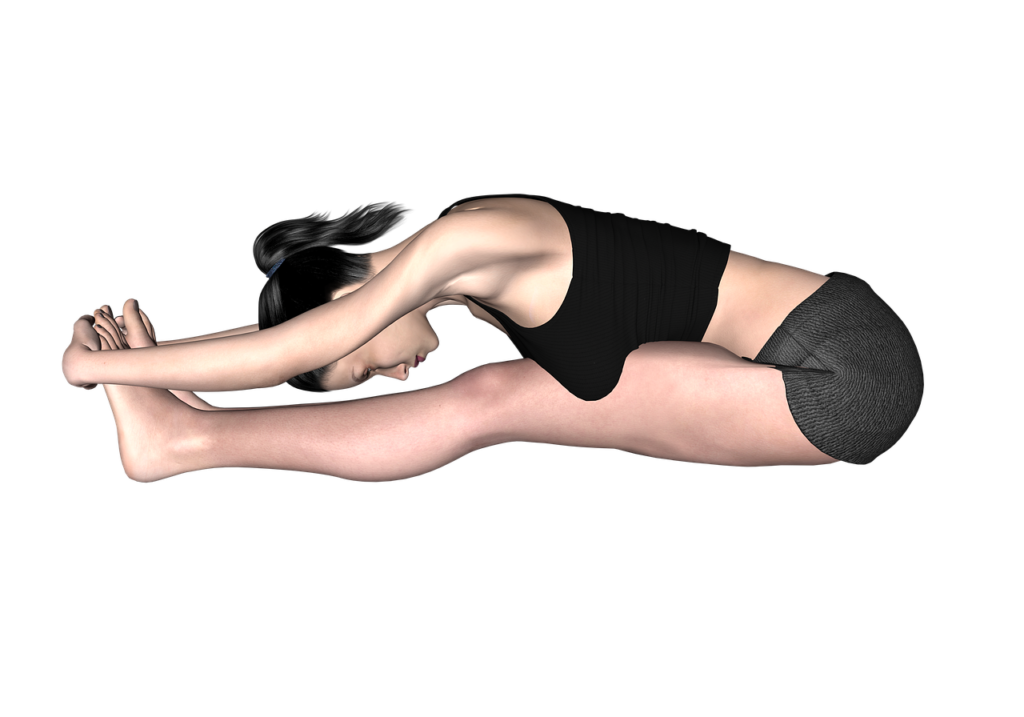
5. Corpse Pose (Savasana)
Corpse Pose, also known as Savasana, is a deeply relaxing yoga pose that serves as a culmination of the practice. This posture allows practitioners to integrate the benefits of their yoga practice, promoting a state of deep relaxation and inner peace. Here’s a step-by-step guide on how to practice Corpse Pose effectively:
Preparation:
- Find a quiet and comfortable space where you can lie down without being disturbed.
- Use a yoga mat or a soft surface to lie on, ensuring that your entire body is supported.
Body Position:
- Lie flat on your back with your legs extended and feet slightly apart.
- Allow your arms to rest comfortably at your sides, with your palms facing up.
- Close your eyes gently, allowing your eyelids to feel heavy and relaxed.
Relaxation:
- Take a moment to consciously relax each part of your body, starting from your toes and working your way up to your head.
- Release any tension or tightness in your muscles, allowing your body to become completely limp and at ease.
Breath Awareness:
- Bring your awareness to your breath, observing the natural rhythm of your inhales and exhales.
- Allow your breath to become slow, deep, and steady, nourishing your body with each breath in and releasing tension with each breath out.
Mental Relaxation:
- Let go of any thoughts or concerns, allowing your mind to become still and quiet.
- If thoughts arise, simply acknowledge them without judgment and gently guide your focus back to your breath or the sensations in your body.
Duration:
- Remain in Corpse Pose for 5-10 minutes, or longer if desired.
- Allow yourself to fully surrender to the experience, embracing the stillness and serenity of the pose.
Release:
- To release from Savasana, begin to deepen your breath gradually, bringing awareness back to your body.
- Slowly wiggle your fingers and toes, gently awakening your limbs.
- Roll onto one side into a fetal position, taking a moment to rest there before slowly coming back up to a seated position.
Corpse Pose offers a profound sense of relaxation and rejuvenation, allowing practitioners to experience a state of deep peace and tranquility.
Conclusion
To wrap it up, yoga’s like your ultimate chill pill in today’s crazy world. It’s your safe haven where you can hit pause, reset, and just breathe. By blending mindful moves, deep breaths, and relaxation hacks, yoga’s got your back – literally and figuratively. Those fab five poses we chatted about – Child’s Pose, Cat-Cow, Downward-Facing Dog, Seated Forward Bend, and Corpse Pose – are your secret weapons for finding that zen, no matter what life throws at you.
So, why not sprinkle these poses into your daily routine? Trust me, it’s like adding a sprinkle of calm to your day-to-day chaos. With a little yoga magic, you’ll glide through stress like a boss, leaving you with more smiles, less worry, and a whole lotta good vibes. Give it a whirl and let the peace, joy, and vitality flow!


You May Also Like
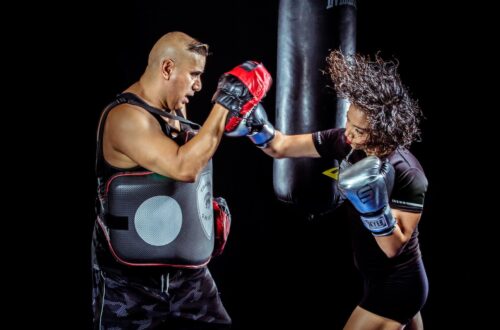
Knockout Facts: All You Need to Know About Kickboxing
6 November 2024
Think Fitness is Too Good To Be True?
12 September 2023